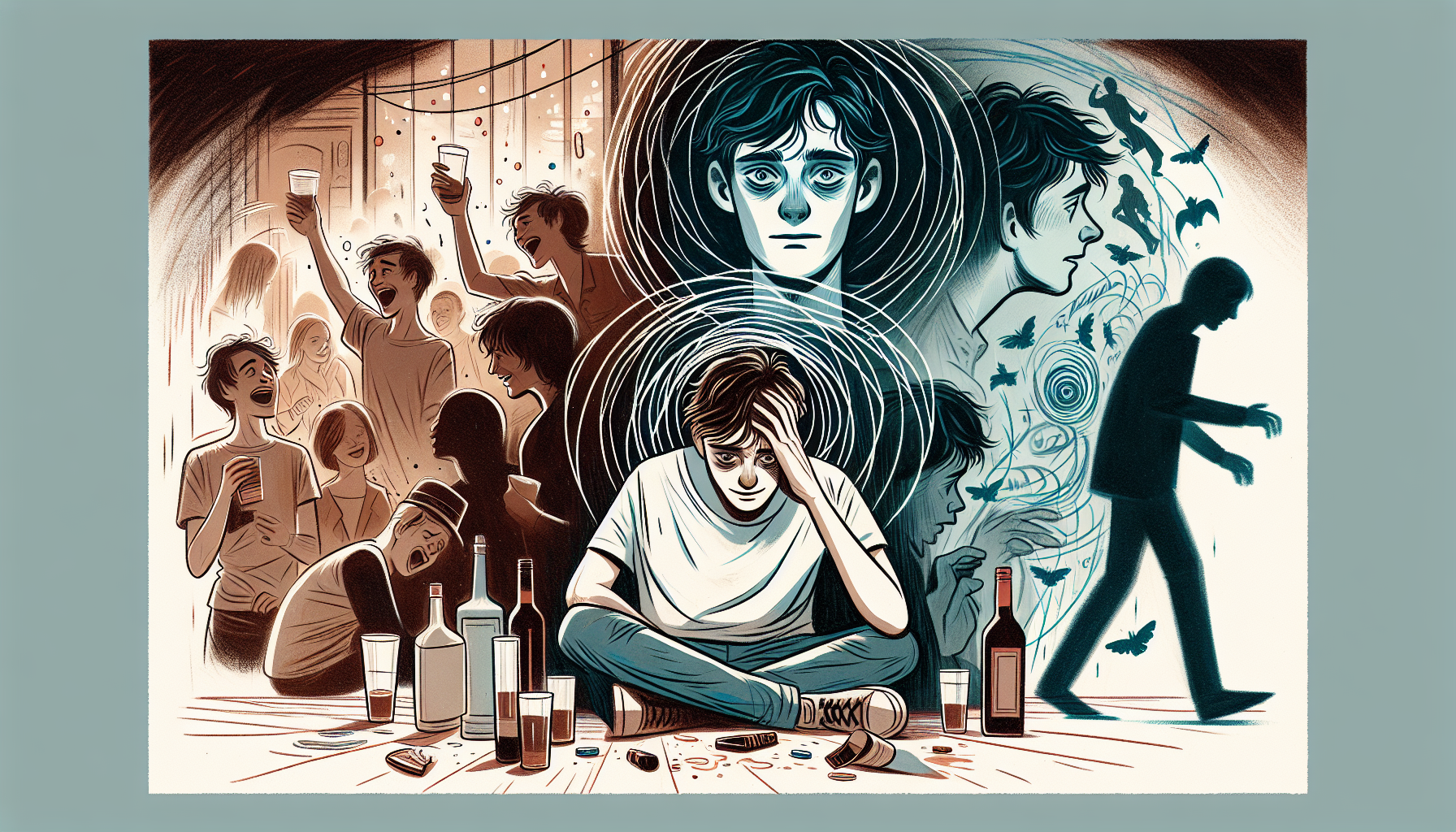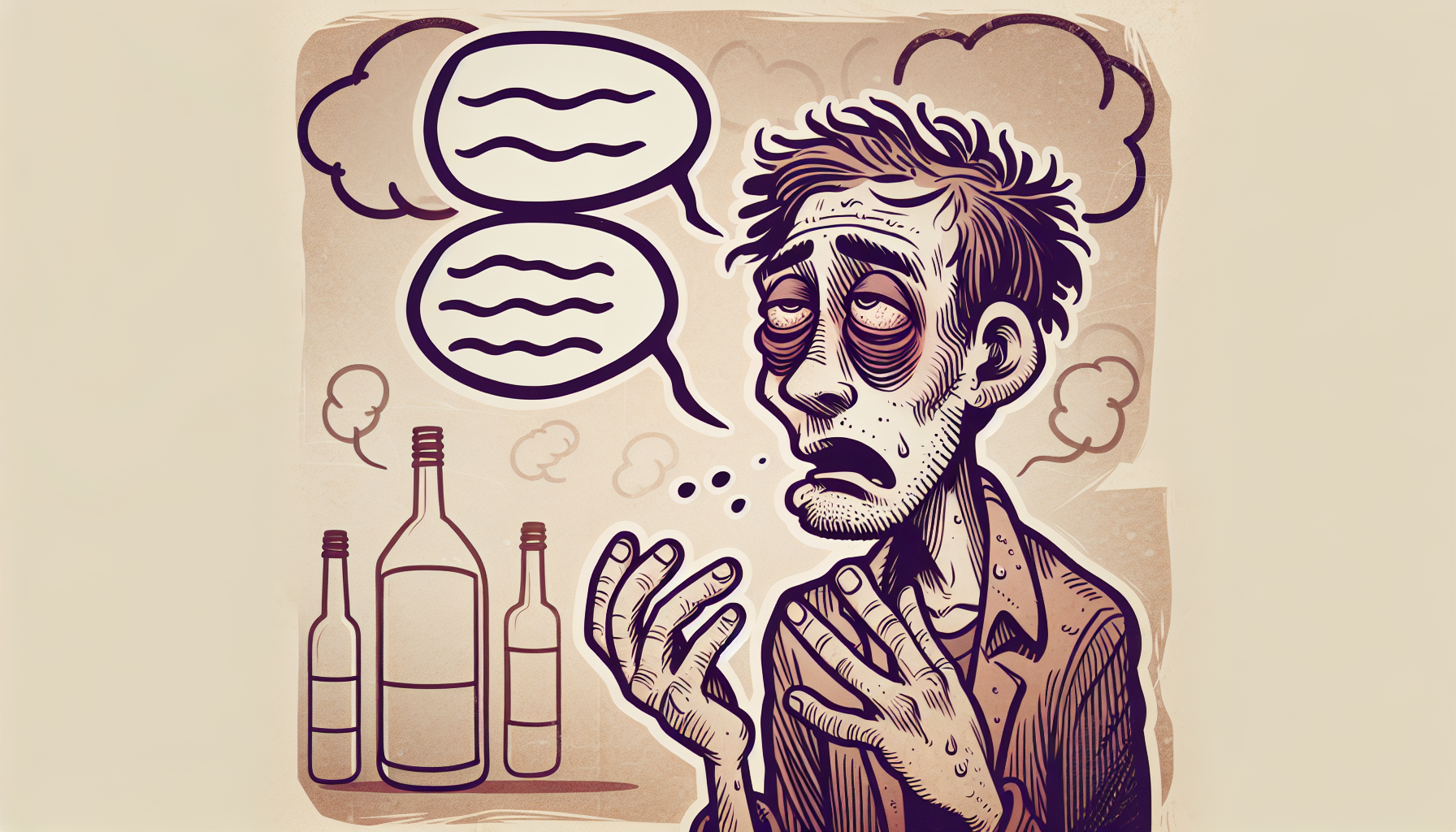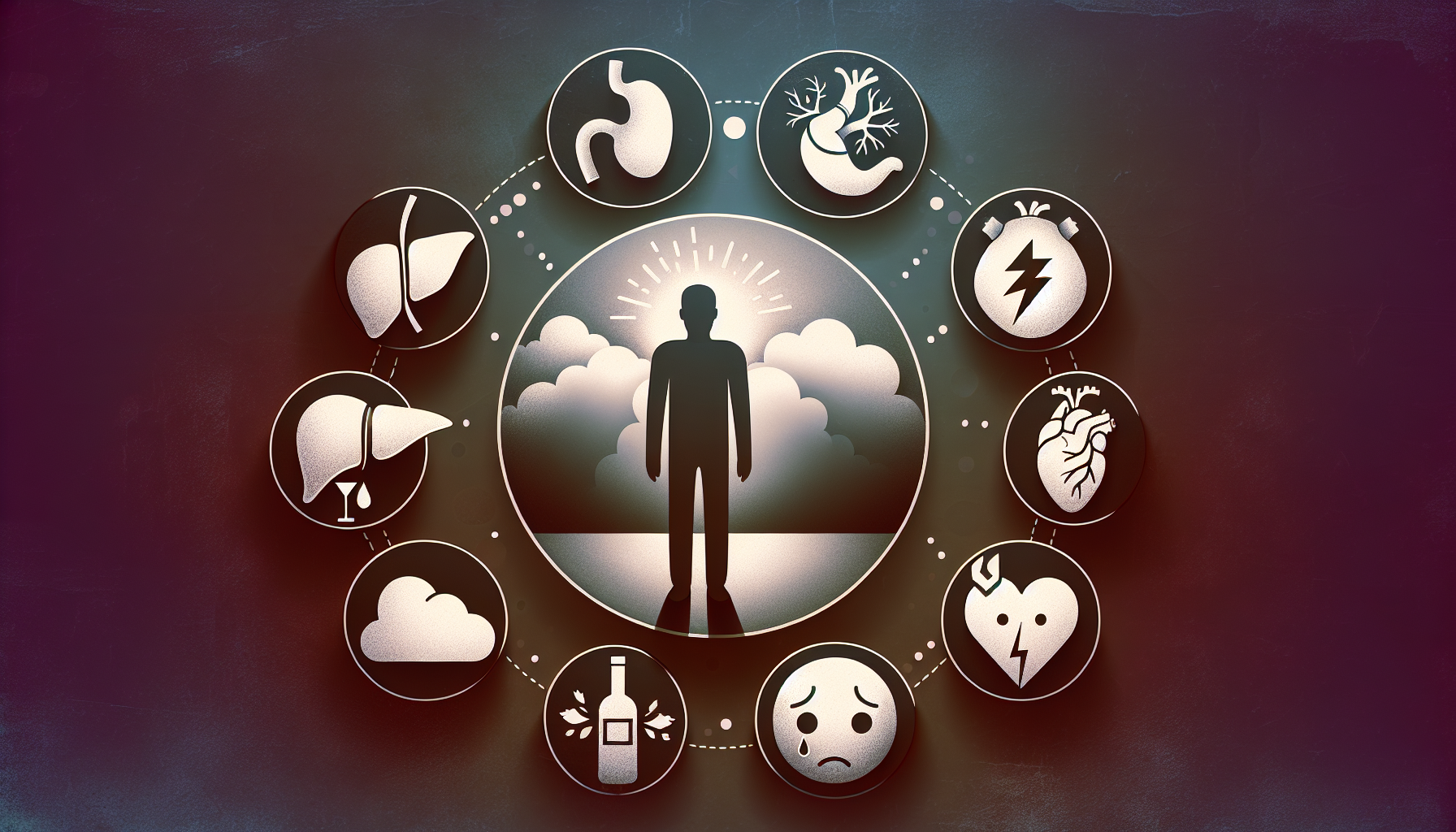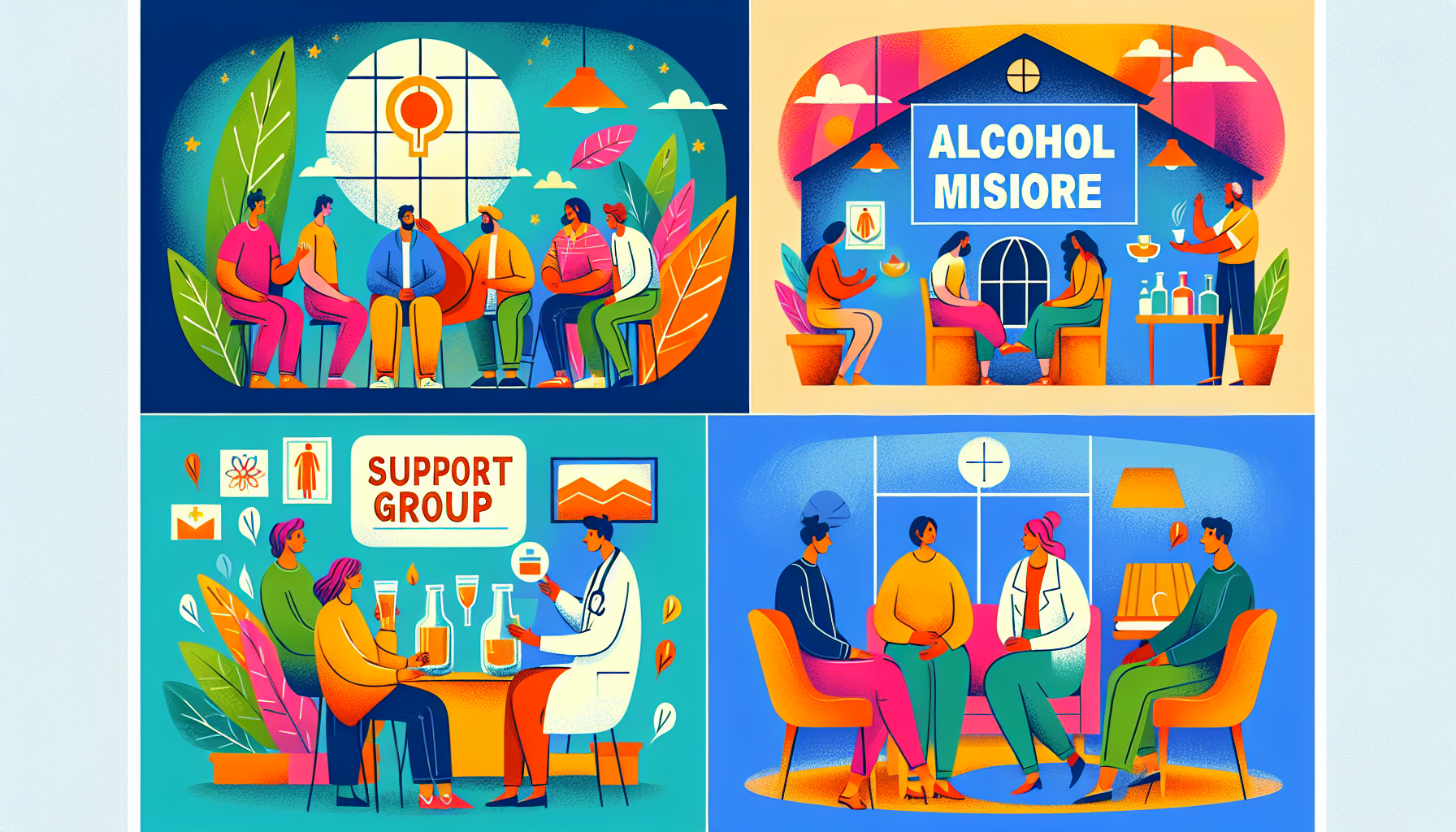Top Signs of Alcohol Problem: How to Identify and Address Alcohol Misuse
- Andrew Collett
- Aug 23
- 12 min read
Do you suspect an alcohol problem in yourself or a loved one? Learn about the key signs of an alcohol problem, such as behavioral changes and physical symptoms, that indicate signs of an alcohol problem, highlighting the need for intervention.
Introduction to Alcohol Misuse
Alcohol misuse, often referred to as alcohol use disorder (AUD), is a serious medical condition that affects millions of people worldwide. Characterized by an impaired ability to control alcohol use despite experiencing negative social, occupational, or health consequences, AUD is recognized as a brain disorder by the Diagnostic and Statistical Manual of Mental Disorders (DSM-5). This manual, published by the American Psychiatric Association, outlines the signs and symptoms that help healthcare providers diagnose and assess the severity of alcohol misuse.
According to the National Institute on Alcohol Abuse and Alcoholism, approximately 28.1 million adults in the United States had alcohol use disorder in the past year. Additionally, behavioral health statistics from sources such as the SAMHSA National Survey on Drug Use and Health provide further authoritative data on the prevalence of alcohol use disorder and related mental health issues. The symptoms of alcohol misuse can range from mild to severe and often include a persistent desire to control alcohol intake, unsuccessful attempts to stop drinking, and continued use despite harmful effects. Recognizing these signs and symptoms early is crucial for seeking help, preventing long-term health problems, and addressing this medical condition before it leads to more serious complications.
Understanding Alcohol Use Disorder
Alcohol use disorder (AUD) is a complex medical condition that affects the brain’s ability to control alcohol use, even when it leads to negative consequences in daily life. Recognized as a brain disorder by the Diagnostic and Statistical Manual of Mental Disorders (DSM-5), AUD can range from mild to severe, depending on the number and intensity of symptoms experienced. This impaired ability to stop or control alcohol use is at the core of alcohol addiction and is often accompanied by withdrawal symptoms when alcohol use is reduced or stopped.
The DSM-5, published by the American Psychiatric Association, outlines specific signs and symptoms that help healthcare providers diagnose alcohol use disorder. These include drinking more alcohol than intended, unsuccessful attempts to cut down or control alcohol consumption, and spending a significant amount of time obtaining, using, or recovering from alcohol. Other symptoms may involve strong cravings, continued alcohol use despite social or health problems, and giving up important activities due to drinking.
Alcohol misuse can cause lasting changes in the brain, making it difficult to control alcohol intake and increasing the risk of relapse. Recognizing the early signs and symptoms of alcohol use disorder is essential for seeking timely help and preventing further complications. Understanding AUD as a medical condition—not a moral failing—can encourage individuals and families to seek the support and treatment needed for recovery.
Key Takeaways
Behavioral changes, such as neglecting responsibilities and social withdrawal, are key early indicators of alcohol misuse.
The physical health risks associated with alcohol use disorder include liver disease, cardiovascular issues, and impaired immune function.
Recognizing when to seek professional help and building a support system are crucial for effective intervention and recovery from alcohol misuse.
Recognizing Behavioral Changes

Behavioral changes are often the first indicators of alcohol misuse. Identifying these signs early can enable timely intervention. A major warning sign is failing to meet significant responsibilities because of alcohol use. Whether it’s missing work, neglecting household duties, or failing in academic performance, these lapses can signal a deeper issue with alcohol.
Frequent, unsuccessful attempts to cut down on drinking often result in neglected responsibilities and increased secrecy. Individuals may start to withdraw from social activities they once enjoyed, choosing instead to spend time drinking. This shift in social interactions is a clear sign that alcohol is taking precedence over other aspects of life.
The inability to control alcohol intake, even in risky situations like drinking and driving, underscores the dangers of misuse. Persistent cravings and the excessive time spent obtaining or recovering from alcohol further underscore the severity of the problem. Identifying these behavioral patterns is the initial step toward effectively addressing alcohol misuse. These patterns can significantly increase a person's risk of developing alcohol use disorder, as they often reflect underlying risk factors that contribute to the progression of the condition. Behavioral treatments for alcohol dependence often focus on changing drinking behavior to help individuals regain control over their lives.
Physical Symptoms of Alcohol Misuse

The physical symptoms of alcohol misuse are often visible and can serve as stark reminders of the body’s response to excessive alcohol consumption. Alcohol intoxication refers to the immediate physical and mental effects of consuming alcohol, which can vary based on the amount consumed and individual tolerance. Withdrawal symptoms, such as tremors, increased heart rate, sweating, and hallucinations, are strong indicators of alcohol problems. These symptoms highlight the body’s dependence on alcohol. It is important to note that individuals can be dependent on alcohol without necessarily meeting the criteria for alcohol use disorder; being dependent on alcohol involves physiological adaptation, so reducing or stopping alcohol consumption can lead to withdrawal symptoms.
The physical symptoms of alcohol misuse are often visible and can serve as stark reminders of the body’s response to excessive alcohol consumption. Alcohol withdrawal symptoms include:
tremors
increased heart rate
sweating
hallucinations
These symptoms highlight the body’s dependence on alcohol and can indicate a tendency to drink alcohol. Different types of alcohol, including distilled spirits, can contribute to the severity of these symptoms.
Severe symptoms like confusion and seizures require immediate medical attention, highlighting the dangers of sudden alcohol withdrawal. Complications alcohol can cause include injuries, coma, or even death, making it crucial to seek medical help for alcohol-related emergencies. Protracted withdrawal syndrome can cause lingering symptoms long after the initial withdrawal phase, making it challenging to stop drinking alcohol and avoid withdrawal symptoms without professional support.
Furthermore, the physical toll of alcohol misuse extends beyond withdrawal symptoms. Chronic heavy drinking can lead to liver disease, cardiovascular issues, and a weakened immune system. Identifying these signs of physical dependence is key for early intervention and effective treatment.
Emotional and Psychological Signs
Emotional and psychological signs often accompany alcohol misuse, reflecting its profound impact on mental health. Individuals with alcohol use disorder frequently experience unstable moods and intense emotional fluctuations. Mood swings can strain relationships and lead to social isolation, worsening the issue.
Poor judgment and impaired cognitive functions during intoxication are common among those battling alcohol addiction. These impairments can lead to risky behaviors and decisions, often resulting in negative consequences that affect all areas of life.
Craving alcohol is a strong desire that results from changes in brain function caused by excessive drinking. This craving is not just physical but can also be triggered by emotional states, creating a cyclical pattern of drinking to regain pleasurable feelings or alleviate negative emotions. This dependency cycle underlines the complex psychological aspects of alcohol misuse, necessitating the addressing of both emotional and psychological factors in treatment.
Impact on Daily Life
Alcohol misuse profoundly impacts daily life, affecting every facet of an individual’s existence. Neglect of essential duties, whether at work, home, or school, is a common consequence of heavy drinking. Such patterns are often associated with problem drinking, which can lead to serious life consequences. This neglect often leads to a cascade of negative consequences, including strained relationships and diminished career prospects, exacerbated by alcohol abuse.
Recovering from hangovers can disrupt daily commitments, leading to missed events or unmet responsibilities. The time spent recovering from the effects of drinking further highlights the detrimental impact on productivity and overall quality of life.
Alcohol dependence often causes individuals to prioritize drinking over their duties and relationships. This shift can result in reduced work productivity and increased absenteeism, ultimately affecting one’s career and personal life. The broader impact of alcohol misuse on daily life underscores the need for timely intervention and support.
Risk Factors
The development of alcohol use disorder is influenced by a combination of genetic, psychological, social, and environmental factors. Individuals with a family history of alcoholism are at a higher risk, as genetics can play a significant role in how the body and brain respond to alcohol. Mental health conditions, such as depression, anxiety, or post traumatic stress disorder, can also increase vulnerability to alcohol misuse, especially when individuals use alcohol to cope with emotional distress.
Starting to drink alcohol at an early age, engaging in binge drinking, or maintaining heavy drinking patterns further elevate the risk of developing AUD. The Diagnostic and Statistical Manual, Fifth Edition, provides clear criteria for diagnosing alcohol use disorder, helping healthcare providers identify those at risk and intervene early. Understanding these risk factors is essential for prevention and for supporting individuals who may be more susceptible to unhealthy alcohol use.
Health Risks Associated with Alcohol Use Disorder

The health risks associated with alcohol use disorder are numerous and severe, affecting both physical and mental well-being. Persistent alcohol consumption greatly increases a person's risk of developing severe health conditions, including liver diseases such as fatty liver and cirrhosis. These conditions can be life-threatening and require long-term medical care.
Cardiovascular issues are another major health risk linked to heavy alcohol consumption. High blood pressure and a greater risk of heart attacks are common among those with alcohol use disorder. Additionally, excessive drinking can lead to pancreatitis, a painful inflammation of the pancreas that can have serious health implications.
Alcohol misuse weakens the immune system, increasing susceptibility to infections. Chronic abuse can also result in brain damage and conditions like Wernicke-Korsakoff syndrome, which affects memory and coordination. These neurological effects demonstrate the extensive damage alcohol can cause.
Long-term heavy drinking often leads to malnutrition and vitamin deficiencies due to impaired nutrient absorption. This can further exacerbate health problems and weaken the body. Frequent excessive drinking is also linked to osteoporosis, heightening the risk of fractures from weakened bones.
Alcohol, a known carcinogen, significantly raises the risk of various cancers, including breast and liver cancer. The mental health implications are equally concerning, with alcohol misuse frequently linked to anxiety, depression, and other mental health issues. Alcohol misuse is a form of substance abuse, which can further complicate both mental and physical health. Understanding these extensive health risks is key to recognizing the full impact of alcohol use disorder.
Safety Risks
Drinking too much alcohol can have immediate and serious safety risks. Alcohol abuse impairs judgment, slows reaction times, and reduces coordination, all of which increase the likelihood of accidents and injuries. The National Institute on Alcohol Abuse and Alcoholism highlights that binge drinking—defined as consuming five or more drinks on a single occasion—significantly raises the risk of alcohol poisoning, car crashes, falls, and violent behavior.
Excessive alcohol consumption can also lead to poor decision-making, such as engaging in unprotected sex or driving under the influence, which can have lasting negative consequences. These increased risks underscore the importance of recognizing and addressing unhealthy drinking habits before they result in harm to oneself or others.
Complications of Alcohol Withdrawal
Alcohol withdrawal can be a dangerous and potentially life-threatening process, especially for those with severe alcohol dependence. Withdrawal symptoms may include anxiety, tremors, sweating, nausea, and in more severe cases, seizures and hallucinations. One of the most serious complications is delirium tremens (DTs), a medical emergency characterized by confusion, rapid heartbeat, and high blood pressure.
The risk of complications increases with the level of alcohol dependence and the presence of other medical conditions. Because of these dangers, healthcare providers often recommend medically supervised detoxification to safely manage withdrawal symptoms and prevent severe outcomes. Medications such as benzodiazepines may be used to reduce the risk of seizures and help stabilize the individual during the withdrawal process. Seeking immediate medical care is essential for anyone experiencing severe alcohol withdrawal symptoms.
Diagnostic Criteria for Alcohol Use Disorder
Alcohol use disorder is marked by an inability to control drinking despite negative consequences. Sometimes called alcoholism, this term is commonly used to describe problematic alcohol consumption. The Diagnostic and Statistical Manual of Mental Disorders (DSM-5), published by American Psychiatric Publishing, specifies eleven criteria for diagnosing AUD, and meeting at least two of these within a year warrants a diagnosis. This approach aids healthcare providers in accurately identifying and assessing the disorder’s severity.
One of the criteria includes cravings for alcohol, a new addition in the DSM-5. The manual categorizes AUD by criteria met: Mild (2-3), Moderate (4-5), and Severe (6 or more). This categorization allows for a nuanced understanding of the disorder’s severity and informs treatment planning.
The DSM-5 merges two previous disorders into one, eliminating legal troubles as a criterion, which helps in providing a more holistic assessment. Knowing these diagnostic criteria is vital for recognizing alcohol use disorder and seeking proper treatment.
When to Seek Professional Help
Recognizing when to seek professional help is crucial in addressing alcohol misuse. Significant distress and daily life dysfunction indicate the need for early treatment. Consulting a primary care doctor, a licensed therapist, or a mental health professional can provide a professional assessment and guide the next steps.
Shame, stigma, and denial often prevent individuals from recognizing their drinking problem and seeking assistance. Encouragement from family and friends can play a pivotal role in motivating individuals to acknowledge their issues and seek help.
Most individuals with alcohol use disorders can improve with treatment, regardless of severity. Interventions from healthcare providers, support groups, and continuous support can greatly aid recovery. If drinking causes problems or family members are concerned, discussing drinking habits with a healthcare provider is crucial.
Treatment Options for Alcohol Misuse

Alcohol treatment encompasses a range of interventions for alcohol use disorder, including professional support, medication-assisted treatment (MAT), and recovery programs. Advancements in medical and behavioral research have expanded the available treatment options over the years. Effective treatments are now available, providing hope and practical steps for those struggling with alcohol addiction. The treatment process usually begins with medically managed detox to address dangerous withdrawal symptoms.
Doctors can prescribe medications to reduce cravings and manage withdrawal symptoms during recovery. Common medications approved for alcohol use disorder include Naltrexone, Acamprosate, and Disulfiram. Medication-assisted treatment (MAT), combining counseling and medication, effectively aids recovery.
Behavioral treatment, such as cognitive-behavioral therapy and motivational enhancement, is a core component of recovery. These approaches focus on changing drinking habits through counseling. Comprehensive treatment addresses underlying issues contributing to addiction, enhancing recovery effectiveness.
Support from healthcare providers, including tailored treatment plans for co-occurring mental health conditions, can significantly improve outcomes. Outpatient therapy involves regular counseling sessions, while residential treatment provides a structured environment for recovery. For some individuals, the goal is to stop drinking altogether to achieve lasting recovery. Continuous support is crucial for managing setbacks and ensuring long-term success.
Support Systems and Resources
Support systems and resources are vital in the recovery process. Mutual-support groups like Alcoholics Anonymous offer peer support, complementing formal treatment. These groups foster a sense of belonging by connecting individuals facing similar challenges, reducing feelings of isolation. Joining a support group can provide valuable emotional and practical support during recovery.
Support groups provide practical advice for managing cravings and triggers, fostering accountability and sobriety commitment. Success stories within these groups can inspire hope and motivate those in recovery. Building a strong support network is crucial for maintaining long-term recovery and achieving lasting change.
Recovery and Support
Recovery from alcohol use disorder is a journey that often requires a combination of medical supervision, behavioral therapy, and ongoing support. For many individuals, the first step is to stop drinking under the care of healthcare professionals who can help manage withdrawal symptoms and monitor for complications. Medications such as naltrexone, acamprosate, and disulfiram are commonly used to reduce cravings and support long-term abstinence, making it easier to avoid relapse.
Behavioral therapies, including cognitive-behavioral therapy (CBT) and motivational interviewing, play a crucial role in helping individuals change unhealthy drinking habits and develop effective coping strategies. These therapies address the psychological aspects of alcohol addiction, helping people recognize triggers, manage stress, and build resilience against future alcohol misuse.
Support groups like Alcoholics Anonymous (AA) and other mutual support groups offer a sense of community and accountability, which can be vital for maintaining sobriety. Sharing experiences with others who understand the challenges of alcohol dependence can reduce feelings of isolation and provide practical advice for overcoming obstacles.
Family history and co-occurring mental health conditions, such as depression or anxiety, can influence a person’s risk for alcohol use disorder and their recovery process. The involvement of mental health services administration and specialized treatment plans can address these factors, ensuring a comprehensive approach to care.
Addressing the health risks associated with heavy drinking, such as liver disease and alcohol intoxication, is an important part of recovery. Recognizing the signs and symptoms of alcohol misuse, including binge drinking and the effects of alcohol intoxication, can help individuals and their loved ones take proactive steps toward lasting change. With the right combination of medical care, behavioral therapy, and support groups, it is possible to stop drinking altogether, improve mental health, and achieve a healthier, more fulfilling life.
Prevention Strategies

Prevention strategies are key to reducing alcohol misuse incidence. Building a support network is effective for addressing alcohol-related issues, offering valuable support for those at risk of relapse. Parents should watch for signs of alcohol problems in their teenagers, as early intervention can prevent more severe issues later.
The Centers for Disease Control and Prevention (CDC) recommends routine alcohol screening and counseling as a preventive strategy. Early intervention and consistent support significantly reduce the risk of developing alcohol use disorder, highlighting the importance of proactive prevention measures.
Summary
In summary, recognizing and addressing alcohol misuse involves understanding the behavioral, physical, emotional, and psychological signs. The impact on daily life and the significant health risks associated with alcohol use disorder highlight the importance of early intervention and professional help. Diagnostic criteria provide a clear framework for identifying AUD, guiding effective treatment and support.
By exploring various treatment options and support systems, individuals struggling with alcohol misuse can find hope and practical steps towards recovery. Prevention strategies and early intervention are key to reducing the incidence of alcohol use disorder, ensuring a healthier future for all. Understanding these aspects empowers individuals to take control and seek the help they need.
Frequently Asked Questions
What are the early signs of alcohol misuse?
Early signs of alcohol misuse include neglecting responsibilities, repeated unsuccessful attempts to cut back on drinking, and withdrawing from social activities in favor of alcohol consumption. Recognizing these signs early is crucial for intervention.
What physical symptoms indicate alcohol misuse?
Alcohol misuse often manifests through physical symptoms such as tremors, increased heart rate, sweating, and severe withdrawal symptoms like confusion and seizures. Recognizing these signs early can be crucial for seeking help.
How does alcohol misuse affect mental health?
Alcohol misuse negatively impacts mental health by causing unstable moods, poor judgment, and impaired cognitive functions. This can create a cycle where emotional states trigger further cravings and substance use, exacerbating mental health issues.
When should someone seek professional help for alcohol misuse?
You should seek professional help for alcohol misuse when it causes significant distress or impairs your daily functioning, especially if those close to you express concern about your drinking habits.
What are some effective treatment options for alcohol use disorder?
Effective treatment options for alcohol use disorder include medically managed detox, medication-assisted treatment, and behavioral therapies such as cognitive-behavioral therapy, alongside support from healthcare providers. These approaches work together to promote recovery and long-term sobriety.



Comments